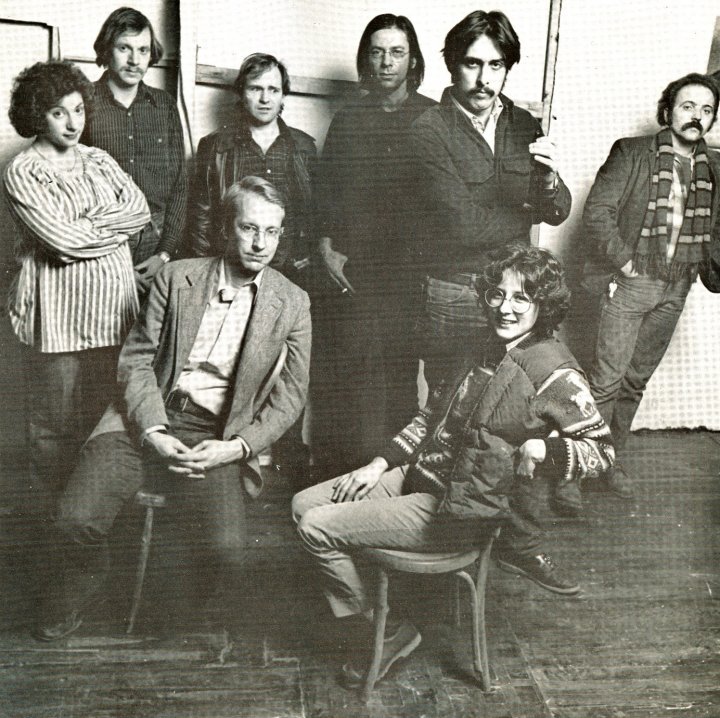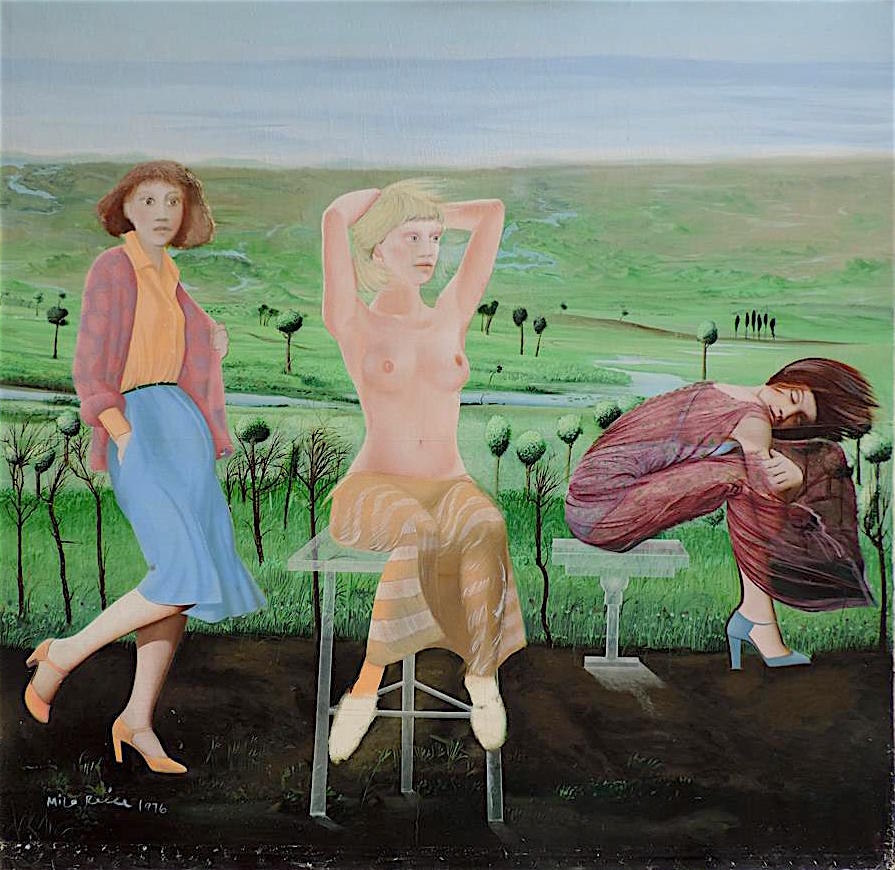
Left to right: Laurie Fabricant, Carter Zervas, Frank Galuszka (rear), Jesse Vandenburgh, Wayne Morris, James Lancel McElhinney, Victoria Davila, Frank Hyder. ” width=”292″ height=”298″ /> Left to right: Laurie Fabricant, Carter Zervas, Frank Galuszka (rear), Jesse Vandenburgh, Wayne Morris, James Lancel McElhinney, Victoria Davila, Frank Hyder. (Photo credit: James E. O’Neal)[/caption]
People Places and Things was a triple-venue exhibition organized by a group of artists composed of Victoria Davila, Frank Hyder, Frank Galusza, Wayne Morris, myself and others, under the auspices of the General Services Administration’s Art-In-Public-Places program. The primary exhibition filled the sprawling lobby and street-level corridors of the William Green Federal Courthouse at 6th and Arch Street. Two simultaneous exhibitions of small works were held at Marian Locks East gallery, on the 200 block of Arch Street, and at Hahn Gallery on Germantown Avenue in Chestnut Hill.
Martha Mayer Erlebacher’s painting Sungazer displayed a wisp of pubic hair, which aroused federal judge Joseph Lord to ban all nudes from the building, claiming that they were offensive to “nuns and children”. We knew people in the press who jumped on the story and milked it for all it was worth. One headline read “No Nudes is Good Nudes, Sayeth Lord”. I protested Lord’s decree by reminding the local head of the GSA that he was part of the executive branch of the government. The judicial arm of government to which Lord belonged was just a tenant. The argument was that Judge Lord had broken protocol and needed to go through channels in order to influence what could (and could not) hang on the walls of a building over which he had no official control. The judge rephrased his remarks. No works were removed. The show was reinstalled. It was the leading story on the evening news and in all the papers for four or five days. It confounds the mind to ponder how the kind of mythological-literary nudity found in Hera Aphrodite Athena. (Milo Reice, 1976) could have raised a blush. One forgets how prudish public taste was during the sexually permissive Disco Seventies.

Absent from the exhibition were Sidney Goodman, John Moore, Arthur da Costa, Ben Kamihira (although his daughter Miya was represented) Walter Erlebacher, Charles Schmidt and Nelson Shanks. Bo Bartlett, Vicent Desiderio, Wade Schuman and Renee Foulks were still in school. As I recall, John Moore had conflicting plans. I don’t think any of us thought to invite Sidney or Ben. It was one of those emerging-artist Andy Hardy “hey kids let’s put on a show” frolics that nobody expected to create any kind of stir.
Despite being less than an all-inclusive overview, People, Places and Things was a defining moment in Figurative art in Philadelphia, where representational art that explored the nude had been the bedrock of studio practice for many local artists since Thomas Eakins. Because the undraped human figure is so ubiquitous, festooning the facade of City Hall, the fountain at Logan Circle and in many other works of public art, the uproar created by People Places and Things was a gobsmacking revelation. It demonstrated to the hidebound Philadelphia art scene and its avant-garde counterculture how figurative art could thrive within a tradition without succumbing to conservatism.
DOWNLOAD: A small chapbook/catalogue was produced for the exhibition: